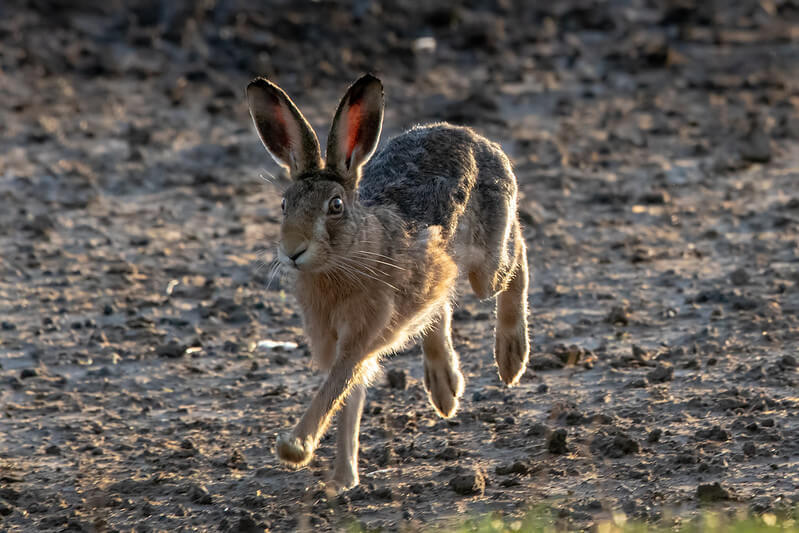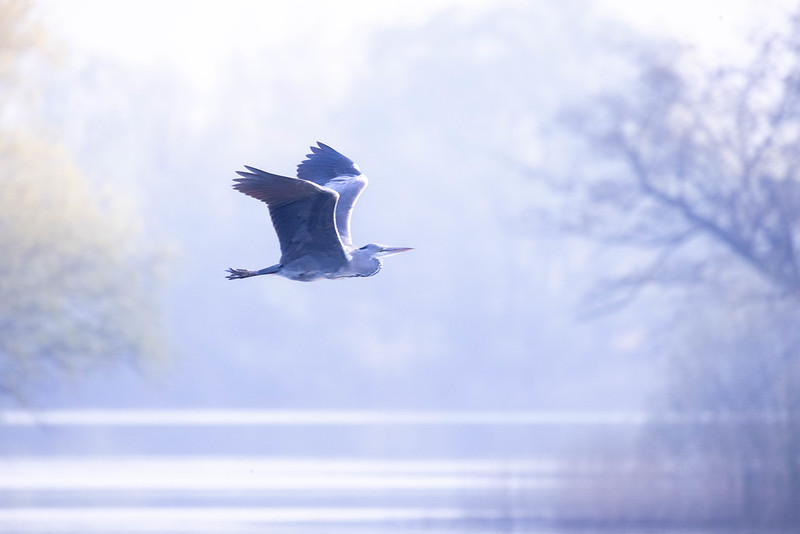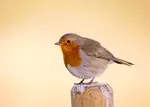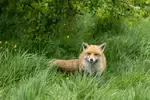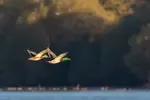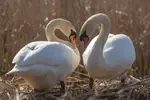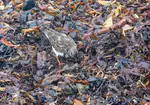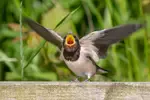- Home
- Photography
Getting Into Wildlife Photography
Why wildlife photography?
Wildlife photography didn’t start for me on safari; it started in a supermarket car park with a blurry shot of a raptor circling over Corby.
The photo was awful, but those talons and eyes hooked me on the idea of telling animals’ stories, not just collecting sharp images.
You don’t need perfect gear, rare species or a plane ticket to begin – just curiosity, patience and a bit of respect for whatever wild lives near you.
On this page, I’ll show you why wildlife photography is worth starting now and how to take your first steps, even from the most ordinary places.
Getting Started with Gear & Settings
Your Guide to Cameras - Learn what really matters in a camera for wildlife (without needing to break the bank)
A Simple Guide to Lenses - Understand the basics of choosing your first wildlife photography lens.
Essential Wildlife Photography Kit - A no-fuss guide to tripods, beanbags, memory cards and other bits that will make your life easier.
How to Change Camera Settings - Feeling intimidated by your camera? Learn how to change settings like aperture and shutter speed to move from frustrating snapshots to beautiful wildlife photos
Your First Field Trip - Learn how to plan your shoot, spot wildlife, and compose beautiful photos—without stress or overwhelm.
Autumn Woodland Photography Tips for Beginners - Come for a walk with my grandson and me and see the woodland through a beginners eyes
Wildlife Photography Tips for Beginners - My top ten tips for getting great photos straight away
Why Lighting Makes All the Difference
You can have the fanciest lens, the cleverest settings, and the most cooperative fox in the county, but if the light isn’t right, the magic might fizzle out.
Light is what shapes your photo.
It can soften, sharpen, warm, cool, hide or highlight. And best of all?
It doesn’t cost a penny. You just have to be in the right place at the right time (with a bit of planning).
Golden Hour (the Wildlife Photographer’s Happy Place)
The hour after sunrise and the one before sunset, both known as the golden hour, are like nature’s version of a soft-focus filter.
- Warm, glowing tones that make everything look richer
- Long, gentle shadows that add shape and interest
- Softer light that flatters fur and feathers (even the scruffiest pigeons)
Arrive early. I’ve missed more than one magical moment by being five minutes late.
Backlighting (a Bit of Drama)
Position your subject between you and the sun and you’ll often get rim light around feathers or fur, a glowing outline that feels almost theatrical.
- Works beautifully on crisp mornings or near sunset
- Try spot metering to avoid turning your subject into a silhouette (unless that’s what you’re after)
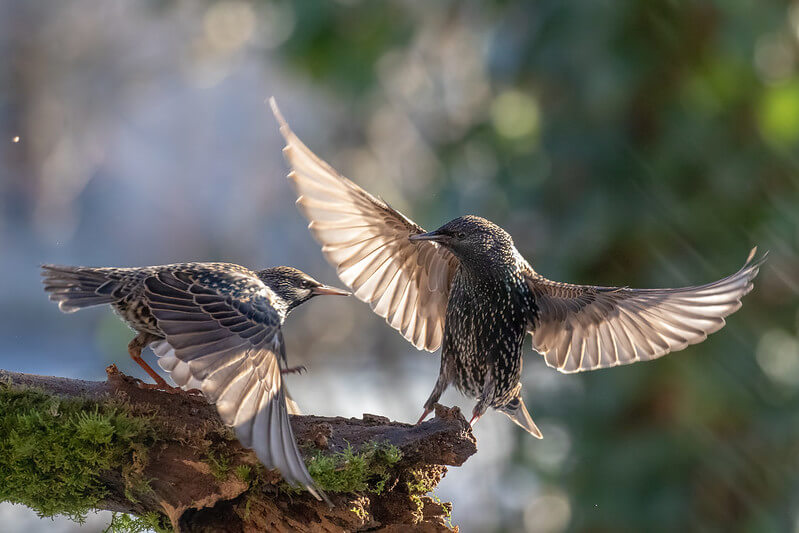 Caught in the garden at 1/2000s, ISO 3200 with the 100–400mm lens on my old Canon 7D Mark II
Caught in the garden at 1/2000s, ISO 3200 with the 100–400mm lens on my old Canon 7D Mark IIMist & Fog (Soft, Moody and Atmospheric)
On misty mornings, the world goes quiet, and so do your photos.
- Mist diffuses light, softens backgrounds, and hides distractions
- Wildlife tends to be more active at dawn, so it’s worth the early wake-up even if the drive to your destination is a bit dodgy
- Bring a lens cloth. Or three. Mist is beautiful, but it also loves to cling to glass.
Whether it’s golden hour glow, backlit drama, or foggy stillness, light is the secret sauce. Learn to watch it, work with it, and sometimes even wait for it. Your patience will be rewarded.
🛠️ Learn from my experiences
Taking photos at Golden Hour. - Where I go out in the dark to be at the right spot at the right time
Winter sunrise trip to Nene Washes. - Where I saw my first short eared owl
By understanding and embracing different lighting conditions, you can boost your wildlife photography and add variety to your portfolio.
Whether it’s the warm glow of golden hour, the drama of backlighting, the mystery of fog and mist or photographing on a rainy day, each lighting scenario offers unique creative opportunities.
Beyond the Gear: Skills You’ll Need (That No Camera Can Buy)
Having the right equipment and understanding how to use it is a fantastic start. But truly connecting with nature through your lens often relies on a few other essentials:
Patience
This is perhaps the wildlife photographer's most valuable asset!
Animals operate on their own schedules, not ours. Much of your time might be spent waiting quietly, observing.
Enjoy these moments. Think of it as time invested in nature, with the photograph as a wonderful bonus.
Observation Skills
Go beyond just looking for animals; learn to see their world.
- Where do local birds tend to perch or feed?
- What time of day are mammals most active in your nearby woods or fields?
Understanding animal behaviour helps you anticipate actions, choose better locations, and know where to focus your attention.
🛠️ Level Up Your Observation
How to Identify Wild Birds. - Being able to identify birds helps you anticipate their next move. Learn the basics with these tips.
Respect for Wildlife (Ethics)
This is non-negotiable. The welfare of your subject always comes first.
- Use your lens's reach to get 'closer', rather than physically approaching in a way that causes stress or disturbance.
- Be especially mindful around nesting sites or animals with young.
Learn and follow ethical wildlife photography guidelines and local codes of conduct (like the UK Countryside Code). Our aim is to capture the beauty of nature without causing harm.
Practice, Practice, Practice
Like any skill, getting into wildlife photography improves dramatically with practice.
- Don't be discouraged by early attempts that aren't perfect – every photographer goes through this!
- Use the birds in your garden, squirrels in the local park, or even your pets to practice tracking movement, experimenting with settings.
- The more you use your camera, the more intuitive it will become.
Where to Go From Here
Right, that’s the pep talk over. The most important thing is not to feel overwhelmed. You don’t need to learn everything at once. Just pick one thing from the list below that sounds interesting and give it a go.
I've organised the rest of my guides to help you, depending on what you're curious about next.
Learning to See and Identify
How to Identify Wild Birds - Learn to spot birds by their shape, sound, and behaviour—no expert skills needed.
Woodland Birds - A guide to the common birds you'll find on a peaceful woodland walk.
Finding a Place to Practice
Nature Walk Checklist - Use this checklist to make sure you have everything you need for a safe and rewarding walk
Best Walks in Northamptonshire - A list of peaceful, rewarding walks perfect for practicing your new hobby.
A Visit to Barnwell Country Park - A lovely, accessible park where you can see kingfishers and otters, perfect for a first trip out
Editing your photos
Once you get home it's time to do what photographers call post processing. Or in other words, learning how to edit your wildlife photos so they are the best they can be.
They might onlly need a litte cropping to remove a stray branch, or a tiny touch of brightness if your exposure wasn't spot on. I always try not to edit heavily and leave the pictures as natural as possible.
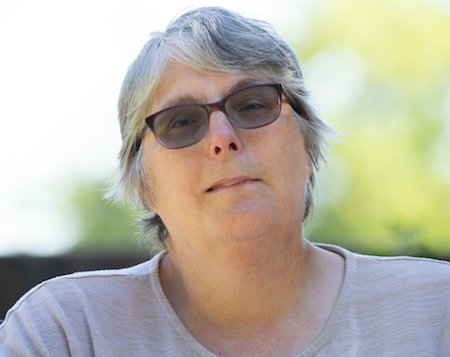
About the Author
For me, it’s never been just about bird names or camera settings, but the thrill of seeing a distant speck turn into a hunting kestrel.
After years of learning how to notice and photograph those moments, my camera has become the tool - and this site the field notebook - where I share what I’ve discovered.
If you’re ready to look a little closer, you’ll find the trips, lessons, and small wins that can help you see and photograph the wildlife right on your doorstep.
Step Behind the Wild Lens
If you’ve enjoyed your time here, you can also follow along by email.
I send the Wild Lens newsletter occasionally. It’s where I share:
- Fresh field notes and recent encounters
- The stories behind favourite photos
- Practical tips that don’t always make it onto the site
You’ll get new UK wildlife guides, photo tips, and ideas for your next walk, straight to your inbox.
